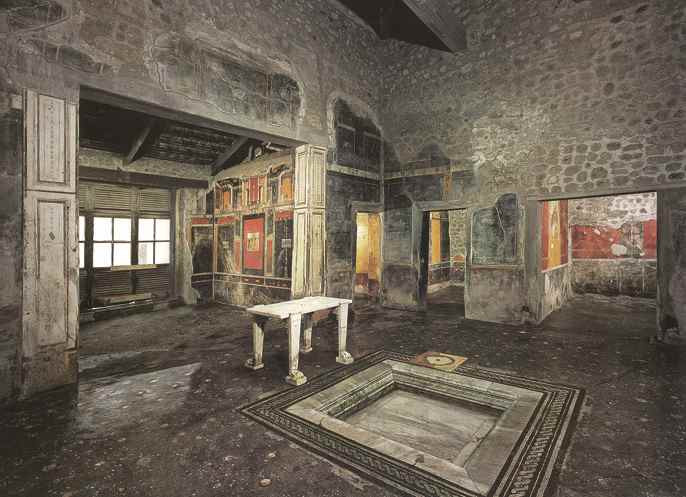
Italian aerospace and defence giant Finmeccanica on Thursday said it was donating the to the culture ministry in a 1.7 million euro ($2.3 million) project entitled 'Pompeii: Give it a Future'. The main aims are to assess 'risks of hydrogeological instability' at the sprawling site, boost security and test the solidity of structures, as well as set up an early warning system to flag up possible collapses. Finmeccanica said the project would last three years and that the results of satellite monitoring of a network of wireless sensors installed around the Roman ruins would be made available via the Internet. Security guards will be supplied with special radio equipment as well as smartphone apps to improve communication that can pinpoint their position and the type of intervention required, Finmeccanica said.
The “Grand Pompeii Project,” was created to preserve Pompeii's “intricate mosaic tiles, bathhouses and even graffiti.”As part of the initiative, six newly restored villas reopened to the. The Great Pompeii Project. Pompeii Projects. The project for the protection and enhancement of Pompeii Archaeological Area. The Pompeii Archaeological Research Project: Porta Stabia (PARP:PS) is bringing to light a largely forgotten corner of ancient Pompeii that has great potential for enlightening Pompeian and Roman history.
Much of the technology is being provided by Finmeccanica subsidiary Selex ES, which also supplies electronic warfare equipment and drones to the military. 'We are offering our technology for the service of the country and its heritage,' Finmeccanica's chief executive Alessandro Pansa told reporters in Rome. Pompeii is the second most visited archaeological site in Italy after the Colosseum and the Roman Forum in Rome, with around 2.5 million visitors every year.
Conservation workers last year began a 105-million-euro makeover of the UNESCO World Heritage landmark, funded by the European Union to the tune of 41.8 million euros. The project is seen as crucial to the survival of Pompeii after a series of collapses at the 44-hectare site in the shadow of Mount Vesuvius—the volcano that destroyed the city in 79 AD. Explore further.
The ancient Roman towns of Pompeii and Herculaneum and villas near the Bay of Naples were buried by the eruption of Mt. Vesuvius in August A.D. 79 Ancient Pompeii stands today as a vast excavated site complete with streets, public spaces, and buildings that once served as stores, houses, public baths, and other useful facilities in what was a wealthy Roman city. Pompeii’s initial excavation from the mid-eighteenth to the early nineteenth century was concerned with finding the site’s most valuable treasures for removal to museums and private collections. Since then, site superintendents in charge of excavation have worked to preserve and present this world-famous site as one of Italy’s key heritage attractions. Many of Pompeii’s most fragile and precious remains are on view today in the National Archaeological Museum in Naples.
In addition, nearly one-third of the site remains unexcavated. Over the years, exposure to the elements, earthquakes, bombing during World War II, and the arrival of 2,000,000 tourists per year have strained Pompeii’s fragile architectural remains. Modern advances in the field of cultural heritage protection have allowed site superintendents to address some of these issues through site management plans, tourism management planning, and pilot conservation projects. 1996 and 1998 World Monuments Watch In 1996, ancient Pompeii was included on WMF’s first World Monuments Watch list, and then again in 1998. From 1996 to 2002, WMF provided technical support and funding for four interventions to the overall conservation effort to protect this iconic archaeological site. They were: 1) underwriting the Piano di Pompeii (a plan for conserving and presenting Pompeii); 2) carrying out a pilot conservation project at the Tomb of Vestorio Prisco; 3) developing conservation planning at Insula V2, in particular, its House of the Silver Wedding Anniversary; and 4) convening the first international conference on preserving Pompeii and other sites in the shadow of Mt.
Pompeii’s initial placement on the World Monuments Watch resulted in an unprecedented resolution by the Italian government that permitted tourism revenues earned at this site to be invested back into it to ensure its protection and improved display. The rediscovery of Pompeii and Herculaneum in the mid-eighteenth century revealed the best evidence to date of ancient Roman daily life.

 0 kommentar(er)
0 kommentar(er)
